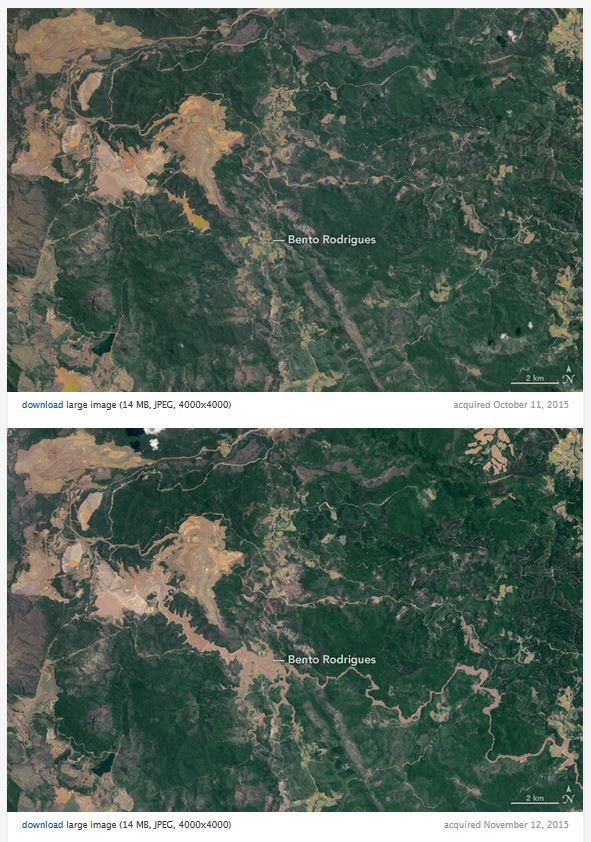On 5 November 2015, at least 60 million cubic metres (equivalent to about 25,000 Olympic-sized swimming pools) of mine waste was accidentally released into the Rio Doce by the Samarco iron mining operation in Minas Gerais state, southeastern Brazil. Within a few weeks, the river had carried the toxic waste to the Atlantic Ocean, devastating communities and the environment along the way and threatening ocean ecosystems. Thirteen people had died and at least another 11 were still missing by the end of November.
One question is always asked each time there is such a disaster: was it preventable?
Typically, the question, posed by distraught local people and government officials, does not generate clear and straightforward responses for the causes, and effects, of such calamities are always complex…..and often contested.
This lack of clear answers was manifested during my recent trip to Brazil. As part of my visit, I attended the Dialogue on Water Governance 2015 (DWG 2015), an event organised by the Inter-American Water Resources Network (IWRN), in conjunction with the Water Research Commission of South Africa.
My visit happened at the height of public debates in Brazil and all over the world concerning the impact caused by the collapse of the wasterwater dam. In some cases, entire villages were swept away as the deluge spread down the river and along the Brazilian coast. The disaster ignited claims of significant levels of environmental and social impacts. Some – including the government – said the incident was the worst environmental disaster in Brazilian history, though it will be some time before the full extent of the damage can be known. There were claims that the Brazilian authorities were in the process of imposing a hefty fine on the responsible mining companies. Yet questions still remain as to why such a gigantic disaster occurred in the first place. Should it not have been preventable and if not, why not?
Perhaps the answers lie in the nature of the causes of such disasters. As the Brazilian Environment Minister Izabella Teixeira noted during a press conference, the disaster was not caused solely by natural forces. Human actions played a big part.
The Minister’s observation clearly suggests that the calamity at the heart of the Rio Doce disaster was rooted in power and economics. Perversely, government efforts to prevent such disasters are often expressed through fines imposed ex-post on perpetrators – as if an ex-post payment can make up for the damage to livelihoods and the environment.
Similar sentiments have always been raised whenever there is a mining pollution disaster in the Kafue River Basin of Zambia. For a long time, the mines that operate in this basin (mostly copper rather than iron mines) have come under increasing and sustained criticism for repeatedly polluting drinking water sources. In 2008, for example, one of the biggest copper mines in the country accidentally discharged polluted water. This discharge found its way into the reticulated water system of a private water utility company. As a result of this disaster, over 1,000 people sought help for abdominal pains, severe diarrhoea and vomiting. While there were no recorded deaths, the widespread contamination incited residents to take to the streets in protest, leading to major civil unrest. The mining company responsible for the discharge was fined US$4,030.
Similar disasters were recorded in the Kafue River Basin in 2007, 2010, and 2011. Each time, the issue of better prevention arose. As was the case in Brazil, the political leadership in Zambia has always attributed the causes of mining water disasters to economic imperatives. As the Zambian Minister of Local Government and Housing observed in 2013, the mining water disasters on the Kafue River were usually a consequence of greed and a lack of corporate social responsibility.
The Brazilian and Zambian experiences point to the fact that prevention of mining industry disasters perhaps lies to a significant extent in development of better technical and regulatory systems; systems founded on attention to what safety and resilience engineering now calls “Safety 1” (minimisation of risk of system failure) and “Safety 2” (maximisation of risk of system success). Ex-post fines for failure are a “Safety 1” mechanism. Companies and governments may need to consider how to better promote and support “Safety 2”. Water managers need to take the distinction between the two on board and thereby build more resilience into their technical and regulatory systems.

